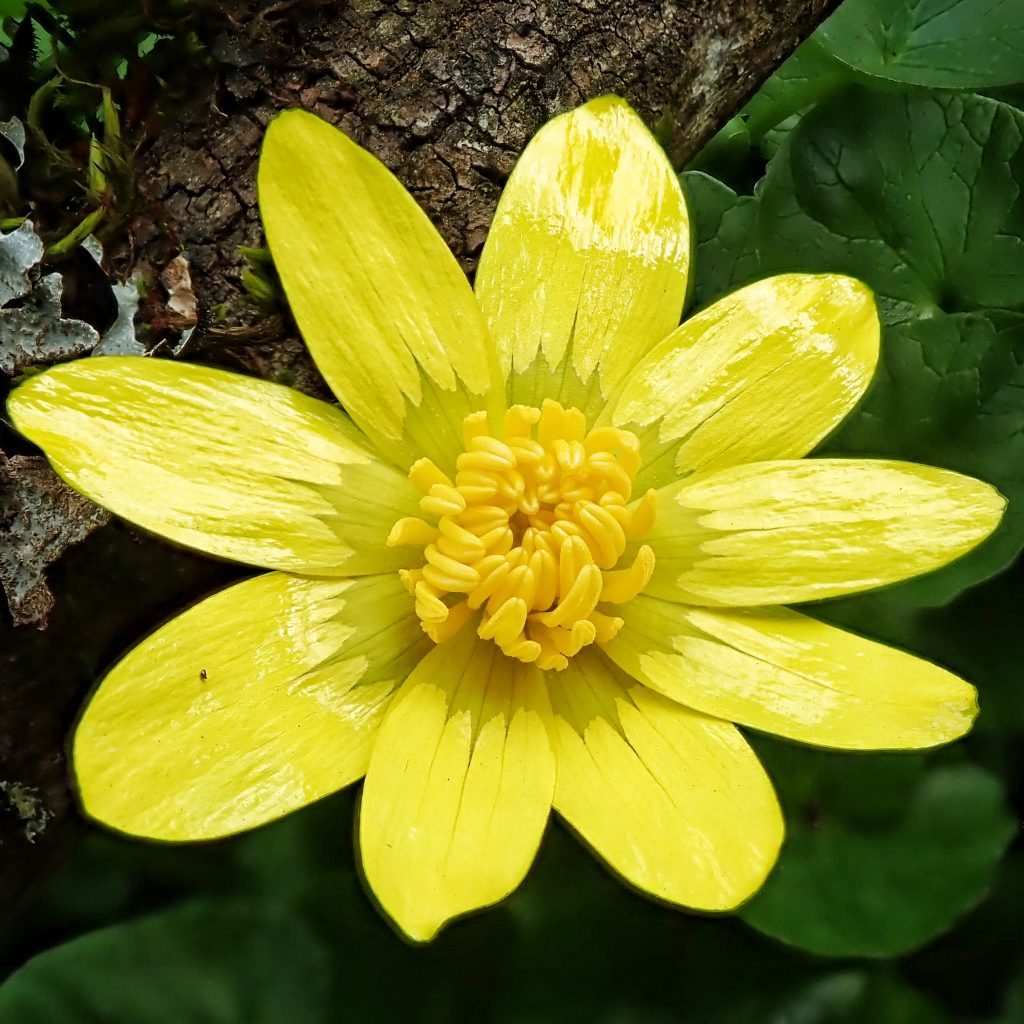
Ficaria verna is a beautiful early spring bloomer, its bright and shining yellow flowers, with a starburst of light green around the stamens, being a welcome sight in a landscape still mostly dulled by the dormancy of winter. The English poets William Wordsworth and Edward Thomas rhapsodized about them, and DH Lawrence and CS Lewis used them symbolically to represent, respectively, love and resurrection. In Europe they are considered to be a harbinger of spring.

It goes by the common names fig buttercup, lesser celandine, and the utterly prosaic pilewort, and was until recently called Ranunculus ficaria in scientific literature. But molecular data have shown that Ranunculus as circumscribed was not monophyletic, so this plant is back in its original genus of record. Morphologically it differs from true buttercups by always having 3 rather than 5 sepals, and smooth, swollen achenes (fruits).
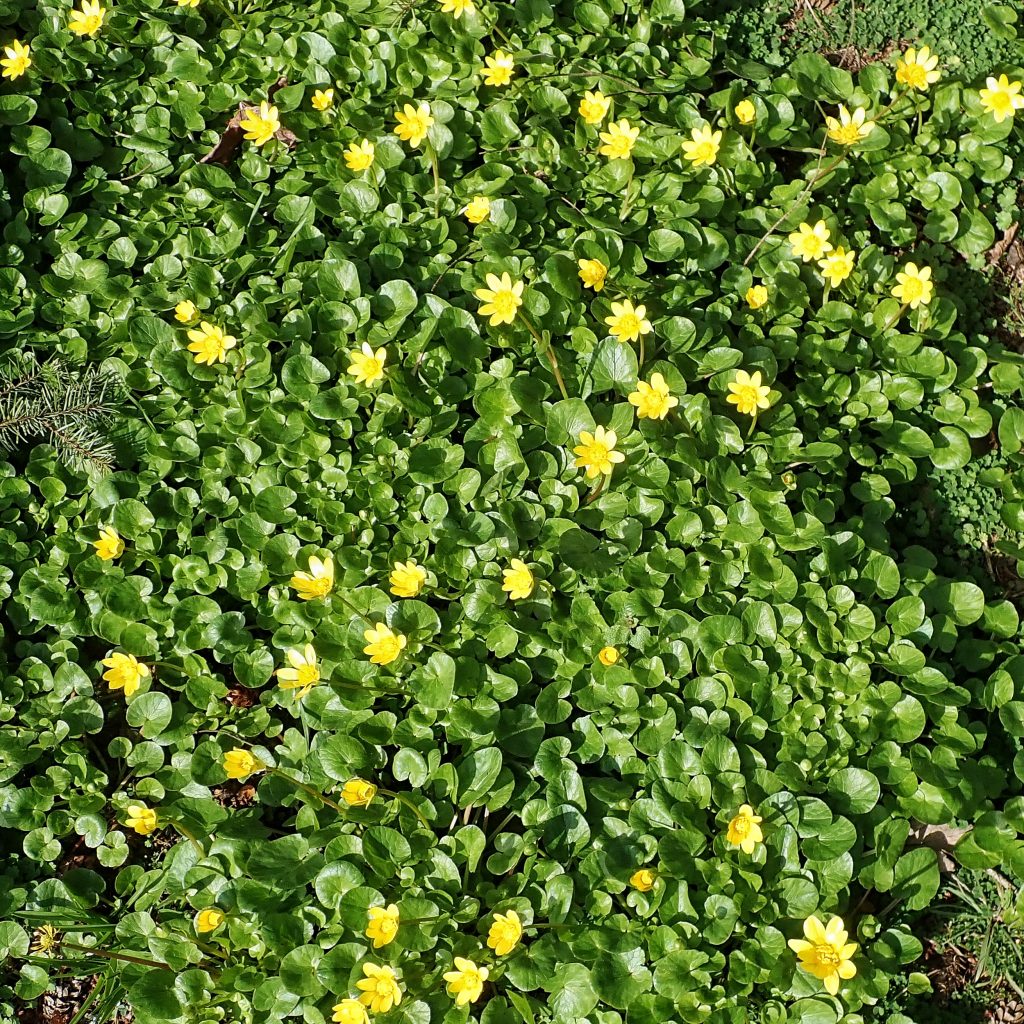
This plant is a non-native European import which has escaped from cultivation and become naturalized in the ne and nw US. It is highly invasive due to a tolerance for many soil and shade combinations, the tendency to form thick, matted monocultures, rapid spreading due to seed, tuberous roots, and vegetative propagules (little clones called bulbils), and the fact that it emerges from its dormant state much earlier than native spring ephemerals, colonizing the ground that they inhabit, and then out competing them.
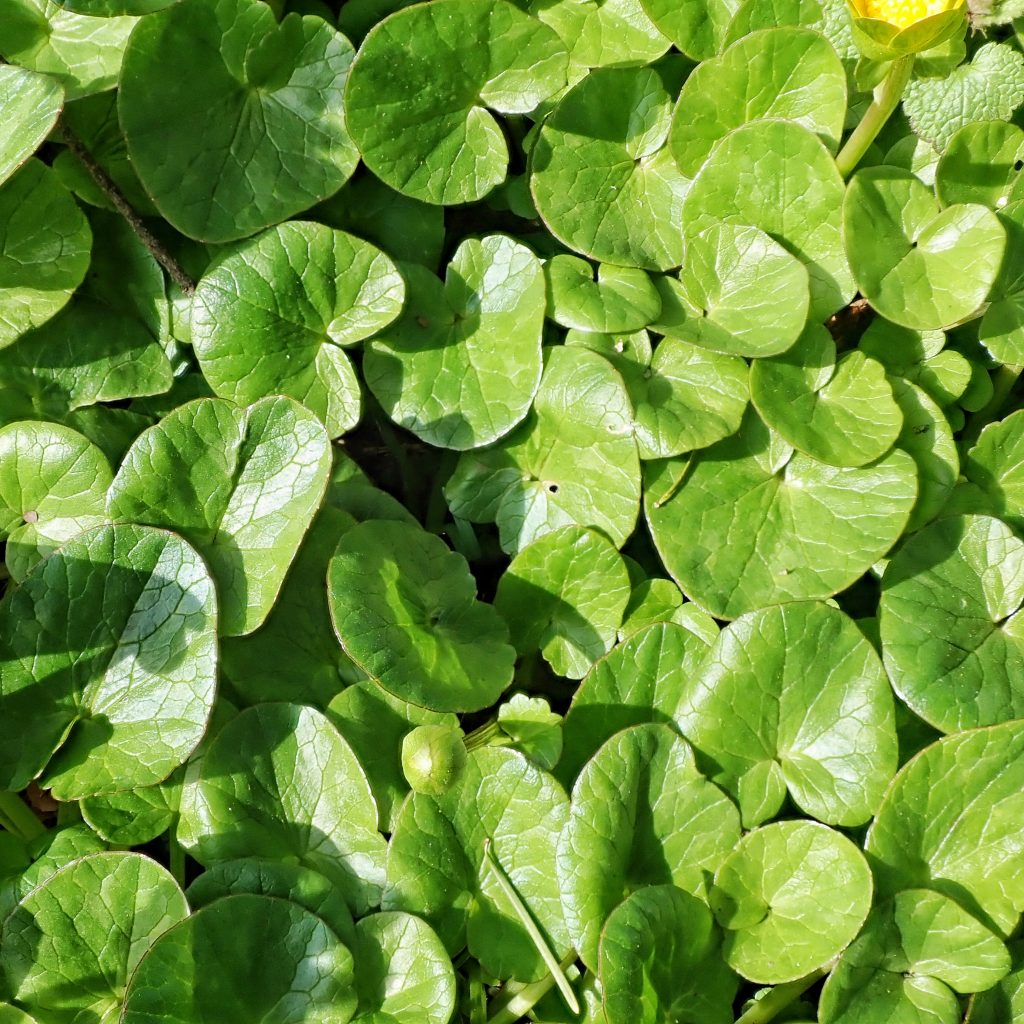
Like most members of the buttercup family Ficaria verna is toxic when raw, and presents a significant hazard to grazing animals, one of many reasons its sale is banned in many states. Drying or cooking alters the chemical (protoanemonin) into less harmful forms. This allows these plants to be used as food in some cases, and to be used in herbal medicine to treat hemorrhoids (hence pilewort) and ulcers. It was also used raw as an antibacterial agent on open wounds, but this practice is not recommended because the protoanemonin can cause further tissue damage.
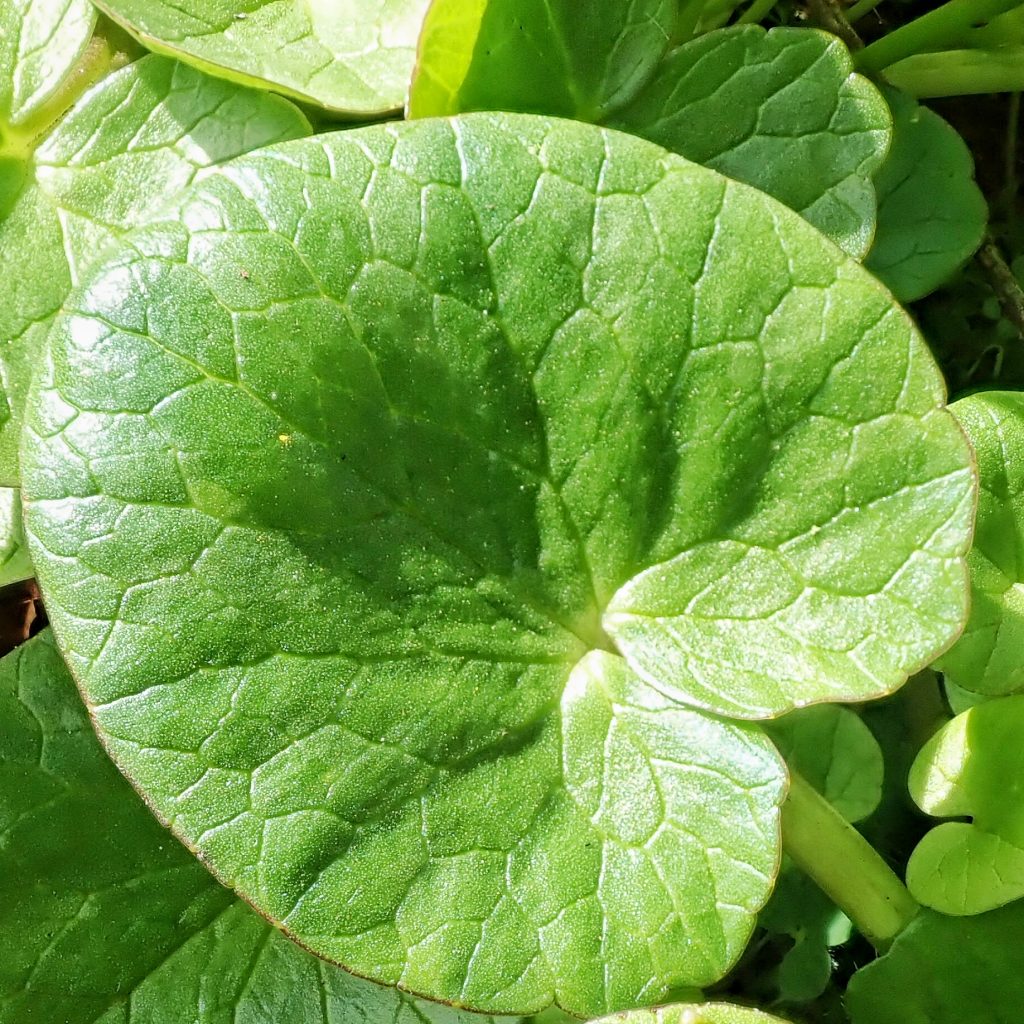
Description-This is a spring ephemeral, and the above ground foliage dies away by summer; it forms extensive mats up to a foot high; leaves are heart shaped, smooth margined, hairless, heavily veined; flowers yellow, 8-10 petalled, glossy, with a spiky, light green blotch near the stamens.
Similar species–Caltha palustris (Marsh Marigold) has 5-6 petals, and the leaves have toothed and wavy margins.
Habitat-Shaded stream banks and moist disturbed ground; prefers non-acidic soils.
Range– Non-native European import; locally common west of the Cascades, mostly along the I-5 corridor, primarily in the Willamette Valley and Puget Trough in our region.
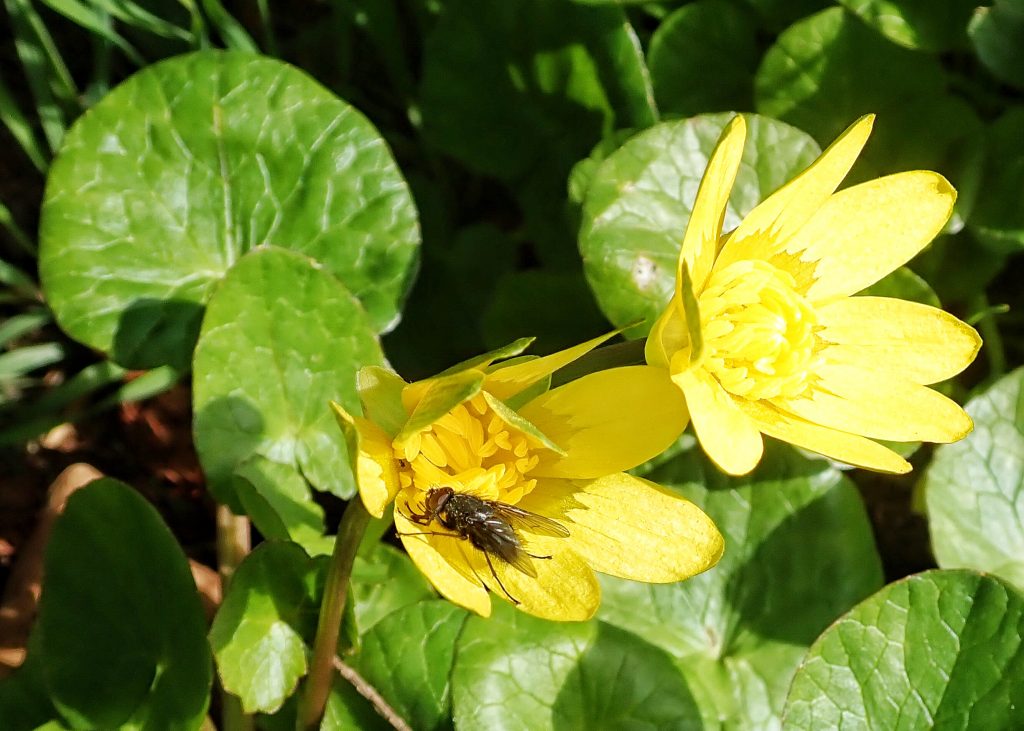
Reproductive timing– Blooms in late winter, usually by early March.
Eaten by-Slugs in the genus Arion are known to consume this plant, but it really doesn’t have any native predators.
Etymology of names– Ficaria is from Latin and means ‘fig like’, which refers to the resemblance of the roots to those of a fig tree, genus Ficus. The specific epithet verna means ‘of the spring’, and refers to the early appearance of the blooming flowers of this species.
The common name lesser celandine is from the Greek for ‘swallow’, and refers to these plants blooming when the swallows return in the spring.
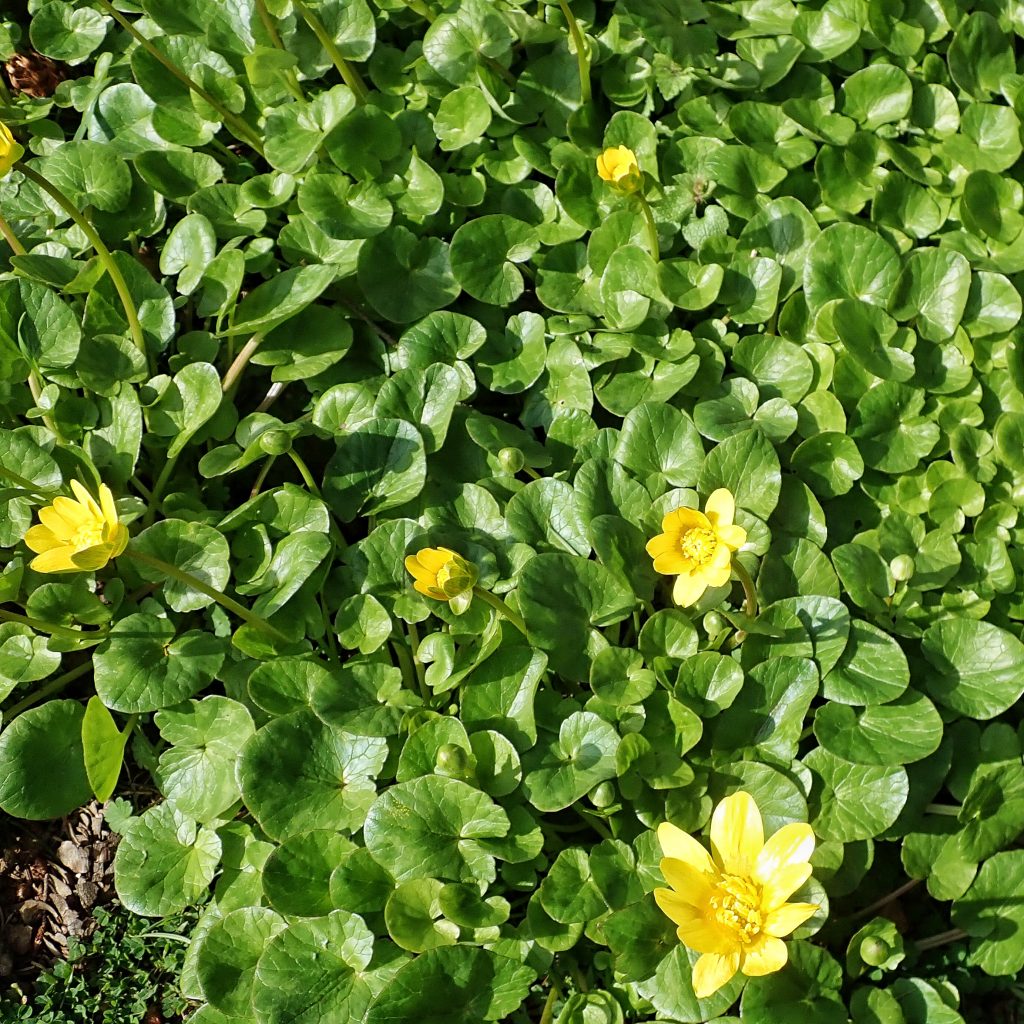
https://urbanecologycenter.org/blog/invasive-plant-to-watch-lesser-celandine-ranunculus-ficaria.html
https://pfaf.org/user/Plant.aspx?LatinName=Ficaria+verna
https://gobotany.nativeplanttrust.org/species/ficaria/verna/
https://www.nwcb.wa.gov/weeds/lesser-celandine-1
https://www.oregon.gov/oda/shared/Documents/Publications/Weeds/LesserCelandineProfile.pdf
https://en.wikipedia.org/wiki/Ficaria_verna
https://www.invasive.org/alien/pubs/midatlantic/five.htm
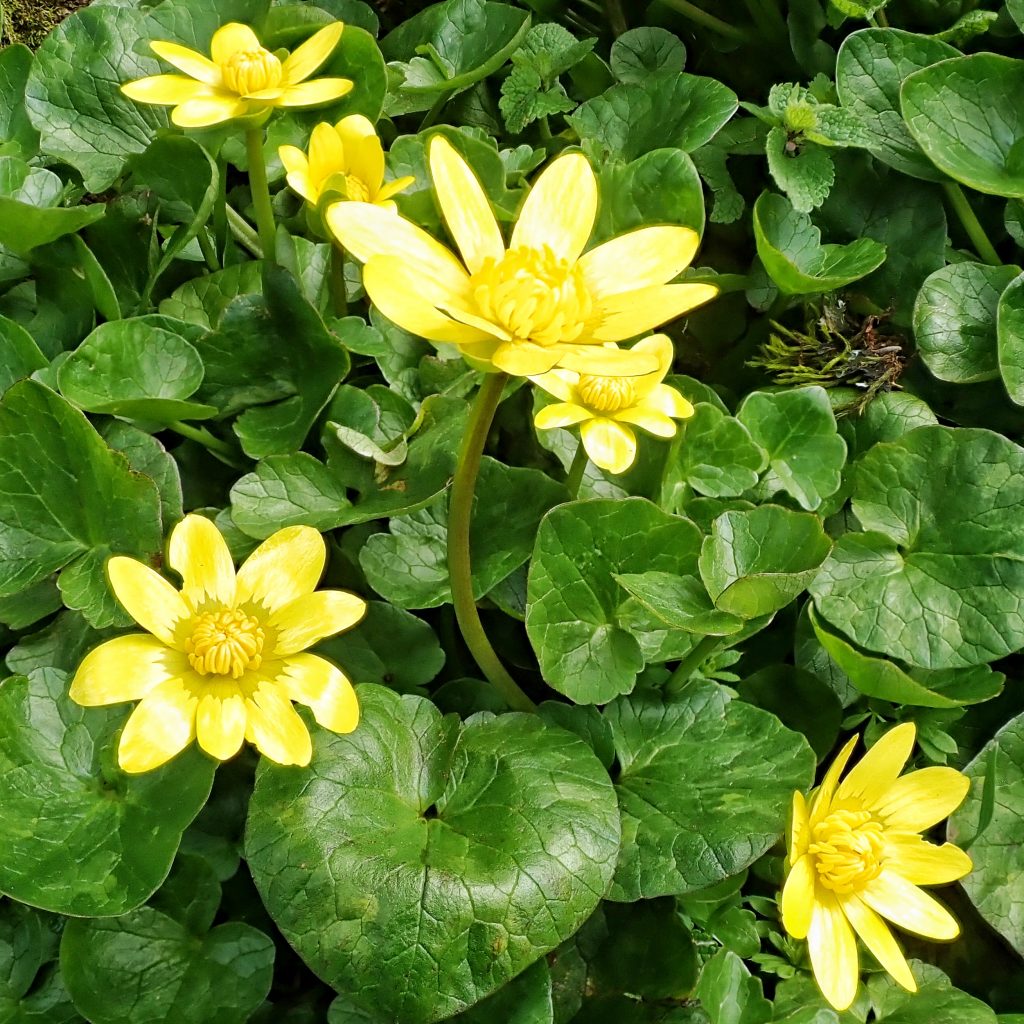
Gorgeous!
Beautiful :):) Thanks!
Read all of your posts, they are so interesting.
Thanks!